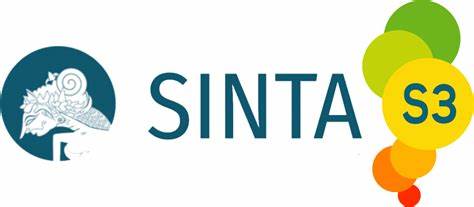UNDERSTANDING STUDENTS’ LEARNING EXPERIENCES IN THE DIGITAL AGE
DOI:
https://doi.org/10.22460/eltin.v8i2.p112-122Keywords:
digital age, learning experiences, complexity theoryAbstract
The growth of digital technology has significantly shaped the way students learn. Surrounded by web-enhanced learning sources, various learning activities are available that have contributed to the change in students’ learning. Based on an interpretative approach of the Complexity Theory, the current qualitative case study aims to investigate how students learn English in the digital era. The sample consists of 42 students of a university in Bogor, West Java, Indonesia. The instrument used for collecting the data includes (a) questionnaire used to examine the accessibility to the digital based learning of the students selected for the sample and (b) narrative frames to explore the students’ learning experiences in the digital era. The study reveals that students’ learning in the digital age is self-organizing which offers the tendency for the students to be autonomous. The study also affirms that the current in-class teaching and learning practices do not align with students’ learning experiences in the digital age. The students felt what they got in classes has failed to satisfy and enrich their understanding of the subject taught. It is thus, as an implication the study has, the integration of learning sources into digital learning sources is encouraged.
Â
Keywords: Digital age, Learning experiences, Complexity theory
References
Bachman, L. F., & Palmer, A. S. (2010). Teachers College, Columbia University Working Papers in TESOL & Applied Linguistics, 2010, Vol. 10, No. 2 Book Review. Language Testing, 10(2), 41–46.
Baker, J. (2006). Complexity and education: Inquiries into learning, teaching and research. Journal of Contemporary Issues in Education, 1(1), 54–55.
Bell, J. S. (2002). Narrative Inquiry: More Than Just Telling Stories. TESOL Quarterly, 36(2), 207.
Bhattacharyya, E., & Shariff, A. B. M. S. (2014). Learning Style and its Impact in Higher Education and Human Capital Needs. Procedia - Social and Behavioral Sciences, 123, 485–494.
De, C., & Franco, P. (2013). Understanding Digital Natives’ Learning Experiences Conhecendo as experiências de aprendizagem de nativos digitais. 643–658.
De Wolf, T., & Holvoet, T. (2005). Emergence versus self-organisation: Different concepts but promising when combined. Lecture Notes in Computer Science (Including Subseries Lecture Notes in Artificial Intelligence and Lecture Notes in Bioinformatics), 3464 LNAI, 1–15.
Falck, O., Mang, C., & Woessmann, L. (2018). Virtually No Effect? Different Uses of Classroom Computers and their Effect on Student Achievement. Oxford Bulletin of Economics and Statistics, 80(1), 1–38.
Gasser, U., Cortesi, S. C., Malik, M., & Lee, A. (2012). Youth and Digital Media: From Credibility to Information Quality. SSRN Electronic Journal, 1–150. https://doi.org/10.2139/ssrn.2005272
Johson, N. (2009). Simply Complexity: A Clear Guide to Complexity Theory. Oneworld Publications.
Jones, C. (2015). Theories of Learning in a Digital Age. In: Networked Learning. Research in Networked Learning. Springer, Cham. https://doi.org/10.1007/978-3-319-01934-5_3
Jukes, I., McCain, T., & Crockett, L. (2010). Understanding the Digital Generation: Teaching and Learning in the New Digital Landscape. Thousand Oaks.
Kasbi, S., & Shirvan, M. E. (2017). Ecological understanding of foreign language speaking anxiety: emerging patterns and dynamic systems. Asian-Pacific Journal of Second and Foreign Language Education, 2(1)
Larsen-freeman, D. (2014). Chaos / Complexity Science and Second Language Acquisition Chaos I Complexity Science and Second Language Acquisition. 18(May), 141–165.
Levis, J. (2014). All use subject to JSTOR Terms and Conditions Topics , Aims , and Constraints in English Teacher. 43(1), 113–125.
Luna, C. (2015). The futures of learning 2: What kind of learning for the 21stcentury? Education Research and Foresight, 1–14.
Miller, S. M. (2011). Student Voices for Change. Technology, 5191(July), 20–23.
Obaidullah, M., & Rahman, M. A. (2018). The impact of internet and social media on the habit of reading books: A case study in the southern region of Bangladesh. Studies in English Language and Education, 5(1), 25–39.
Ortega, L. (2017). Complexity Theory and Language Development In celebration of Diane Larsen-Freeman (L. Ortega & Z. Han (eds.)). John Benjamins Publishing Co.
Padmavathi, G. (2019). Teaching and Learning in the Digital Age. 3(1), 1–23.
Palfrey, J., & Gasser, U. (2008). Born digital : understanding the first generation of digital natives. Basic Books.
Pappas, I. O., Cetusic, L., Giannakos, M. N., & Jaccheri, L. (2017). Mobile learning adoption through the lens of complexity theory and fsQCA. IEEE Global Engineering Education Conference, EDUCON, 536–541.
Prensky, M. R. (2012). From Digital Natives to Digital Wisdom: Hopeful Essays for 21st Century Learning. Corwin Press.
Siregar, R. A., Fauziati, E., & Marmanto, S. (2020). An Exploration on EFL Teachers’ Perceptions of Effective 21st-Century Pedagogical Competencies. JEELS (Journal of English Education and Linguistics Studies), 7(1), 1–24.
Swenson, T., & Visgatis, B. (2011). Frames To Assess Overseas Experiences. 441–452.





